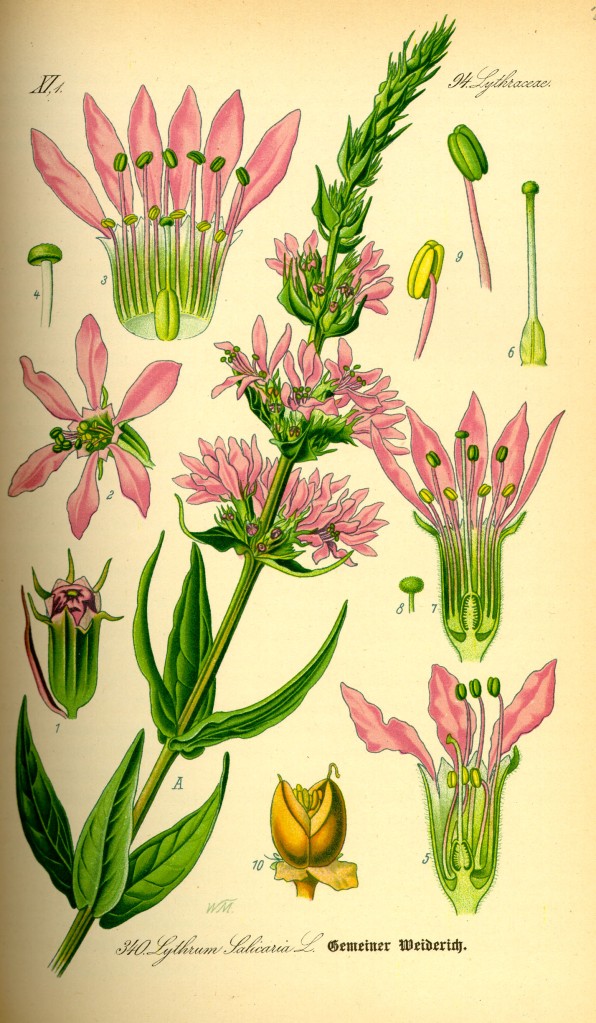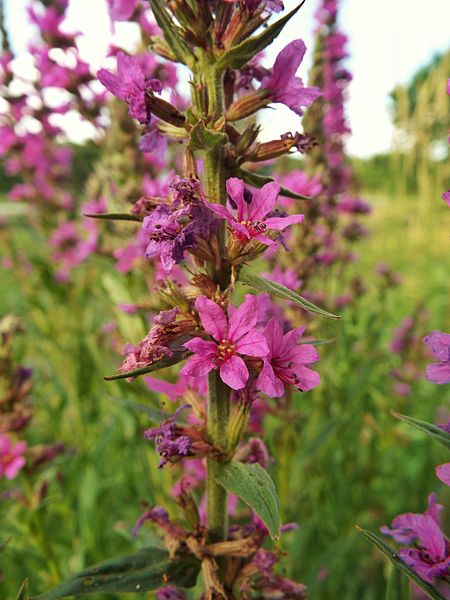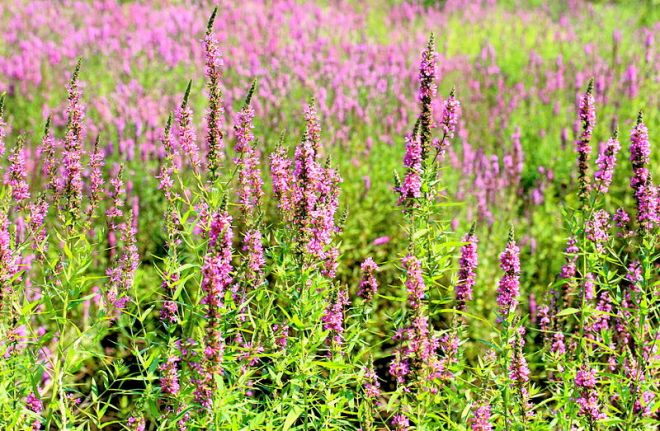“Lewis’s prairie flax is a pretty garden ornamental suited to hot, dry sites. Each morning delicate sky blue flowers open on slender arching stems, only to fall off in the afternoon and be replaced by others the next morning. In spite of its fragile appearance, it is quite sturdy and may put out a second flush of blossoms on new growth in late summer.” — Common to the This Country: Botanical Discoveries of Lewis and Clark by Susan H. Munger
When selecting plants for a waterwise garden, it is imperative that at least a portion of the plants are easy to grow and maintain and are adapted to a wide variety of conditions. This will ensure a more successful garden, both functionally and aesthetically. Luckily, there are a number of drought-tolerant plants that pretty much anyone can grow without too much trouble. Blue flax, in my opinion, is one such plant.
You may be familiar with flax as a culinary plant, known for its edible seeds which are used to make flour (i.e. meal) and oil. Or perhaps you’ve used linseed oil, a product of flax seeds, to protect wooden, outdoor furniture or in other wood finishing projects. You may also think of linen when you think of flax; and you should, because linen is a textile made from the fibrous stems of the flax plant. All of these products generally come from a domesticated, annual flax known as Linum usitatissimum – a species that has been of benefit to humans for millenia. Various species of flax have also been planted for erosion control, fire breaks, forage for livestock, and in pollinator-friendly gardens. Flax seeds, a common ingredient in bird seed mixes, provide food for birds and other small animals. All this to say, humans and flax share a long history together, and it deserves a place in your garden.

The flax species profiled here is actually two species: Linum lewisii and Linum perenne. That’s because these two species look nearly identical and are both used as garden ornamentals and in wildflower seed mixes. They are also both known as blue flax, among myriad other common names. Due to their similiarity, L. lewisii is considered by some to be a subspecies of L. perenne.
Linum lewisii is found across western North America and received its name after being collected by a member of the Lewis and Clark Expedition. The plant collection was brought back from the expedition and determined to be new to western science. It was described and named by Frederick Pursh. Linum perenne is a European species which was introduced to North America as an ornamental and has since become widely naturalized. In 1980, a naturalized selection of L. perenne was released for use in restoration plantings under the cultivar name ‘Appar’ with the understanding that it was L. lewisii. A genetic study later revealed that the cultivar was instead L. perenne. The study also provided evidence that “North American Lewis flax and European perennial blue flax are reproductively isolated,” suggesting that they are indeed two separate species.

Despite being separate species, telling them apart can be a challenge. Blue flax plants grow from a taproot and woody base and are multistemmed, reaching two to three feet tall. The stems are thin yet stringy, wiry, and not easily torn, which helps explain why flax is such a good plant for making textiles. Short, slender leaves are alternately arranged along the length of the stems, while flower buds form at the ends of stems in loose clusters. Flowers bloom early in the day and are spent by the afternoon. They are 5-petaled, saucer-shaped, and a shade of blue – from whitish blue to deep blue – depending on the plant. Small, round, 10-chambered seed capsules form in the place of flowers, each chamber housing one or two flat, shiny, dark brown seeds. Flowers bloom daily in succession up towards the ends of stems even as the fruits of spent flowers lower on the stalk mature.

A close look at their flower parts is really the only way you might be able to tell these two species apart. Blue flax flowers have five stamens topped with white anthers and five styles topped with little, yellow stigmas. The flowers of L. lewisii are homostlyous, which means their styles are all the same length and are generally taller than or about the same height as the stamens. The flowers of L. perenne are heterostylous, which means their flowers can either have styles that are much longer than their stamens or stamens that are much longer than their styles. Each plant in a population of L. perenne has either all long-styled flowers or all short-styled flowers. In a mixed population of L. perenne and L. lewisii, separating the long-styled L. perenne plants from the L. lewisii plants presents a challenge (at least for me).
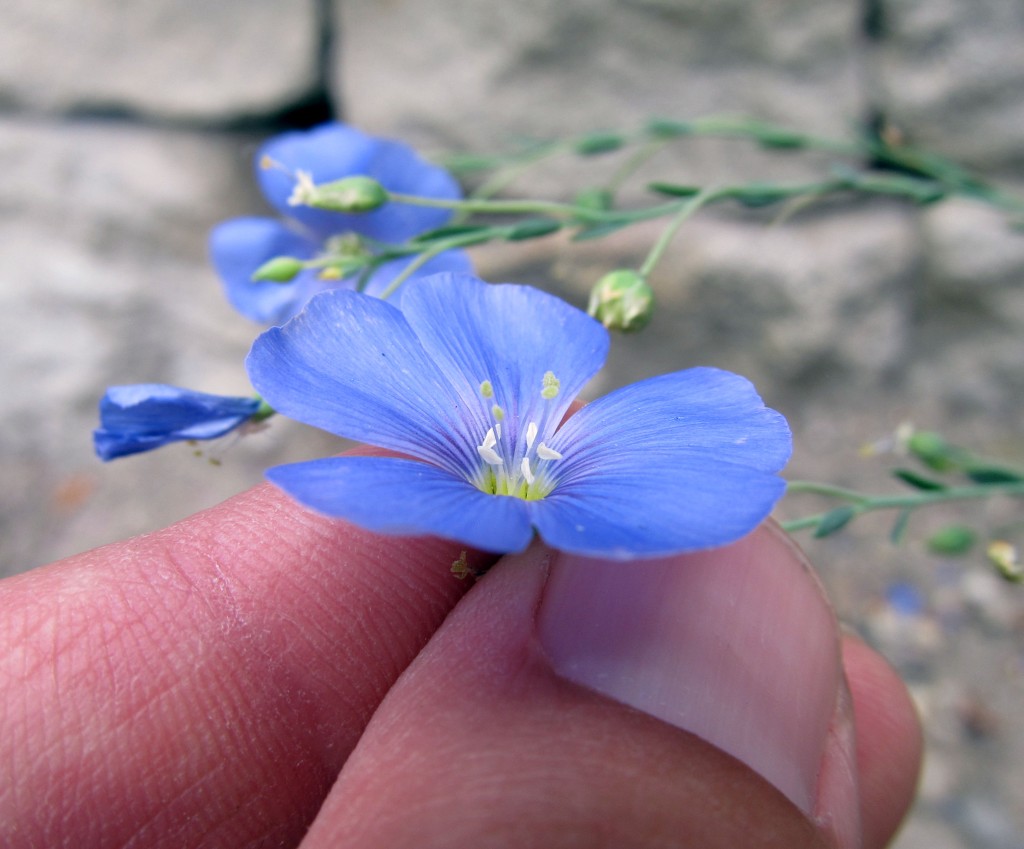
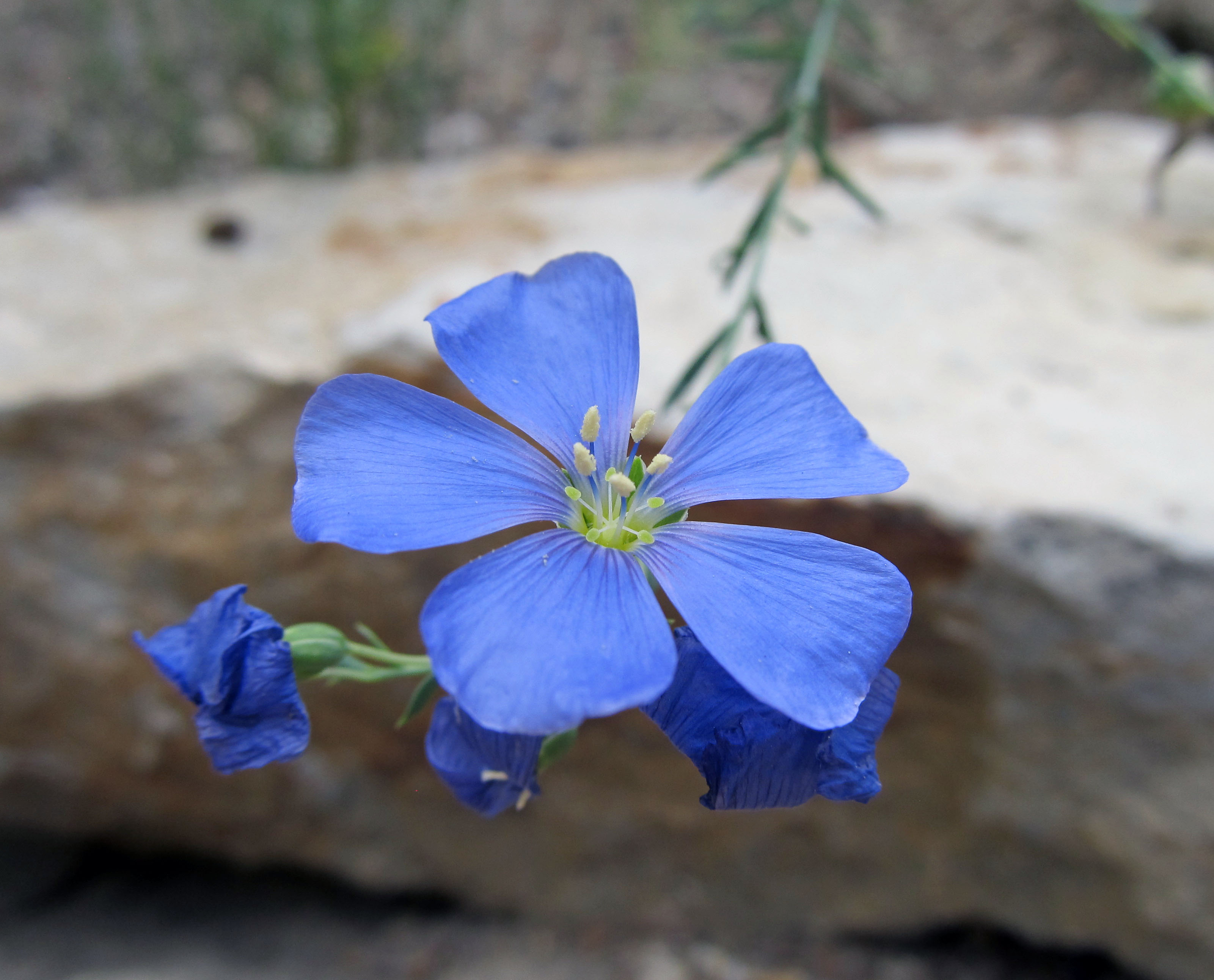
Due to the similarity of these two species, it’s easy to see how the plants or seeds of blue flax could easily be mislabeled and sold as one species even though they are the other species. This could be a problem in a restoration planting where seed source and identity is critical, but in your garden, it’s really no big deal. Both species are great for waterwise and pollinator gardens. They are equally beautiful and easy to grow and care for. If nothing else, perhaps the challenge in identifying them will encourage you to take a closer look at your flowers and familiarize yourself with their tinier parts – an act all of us amateur botanists could stand to do more often.

